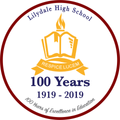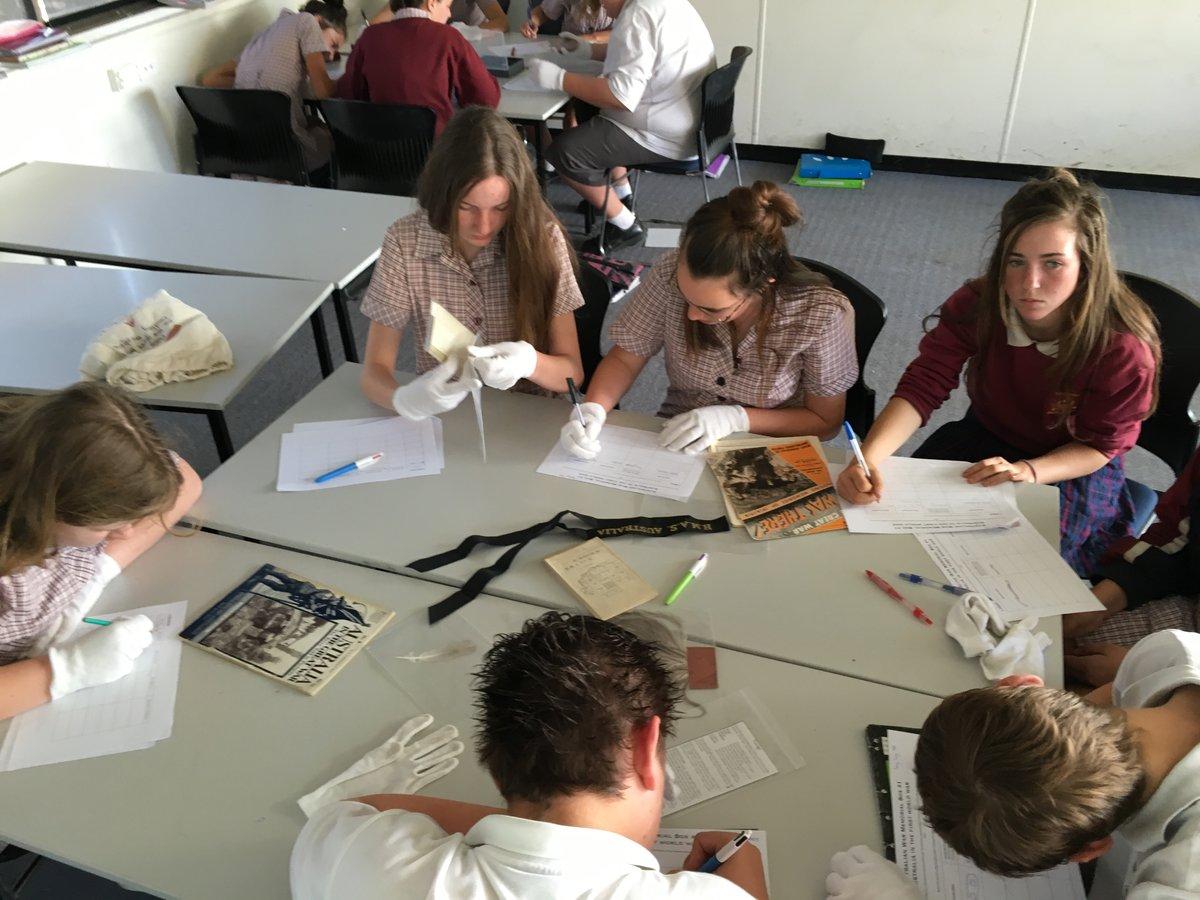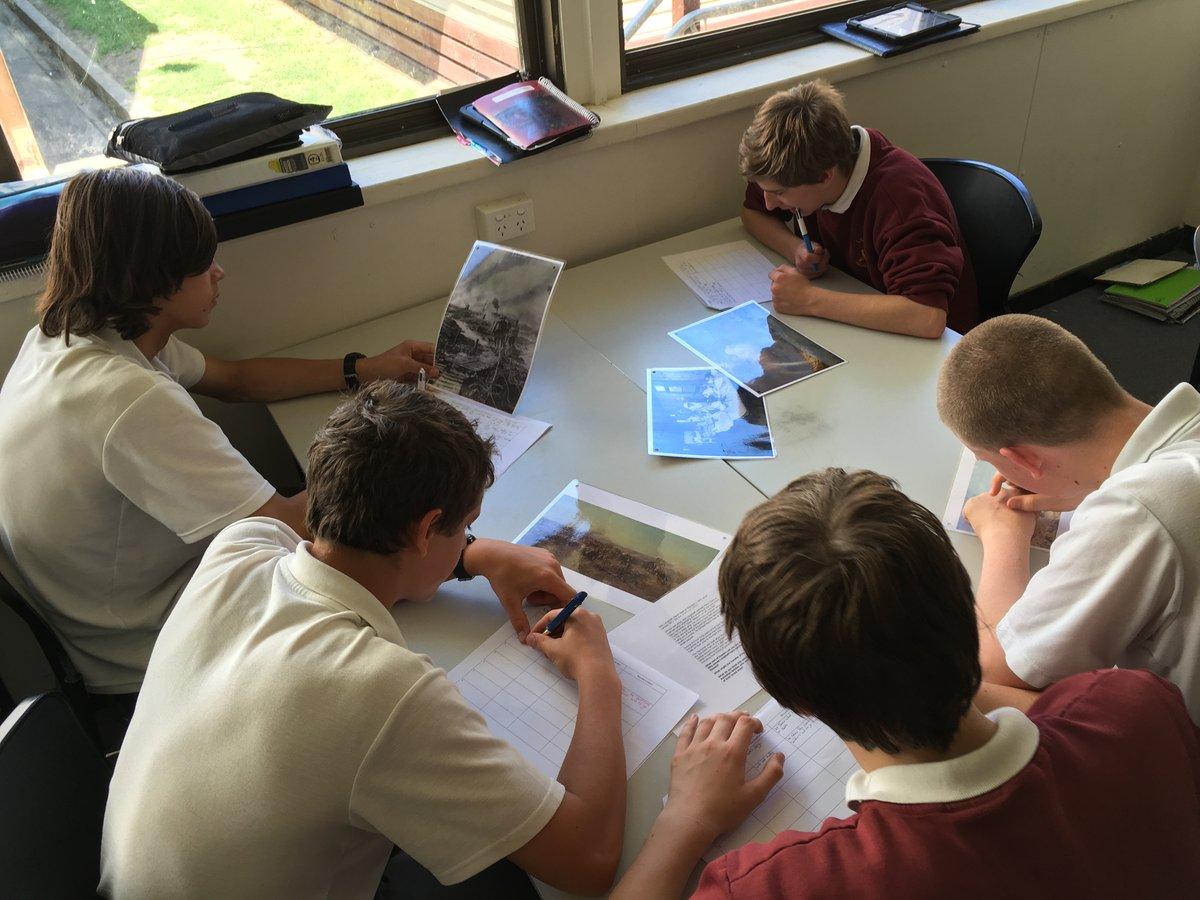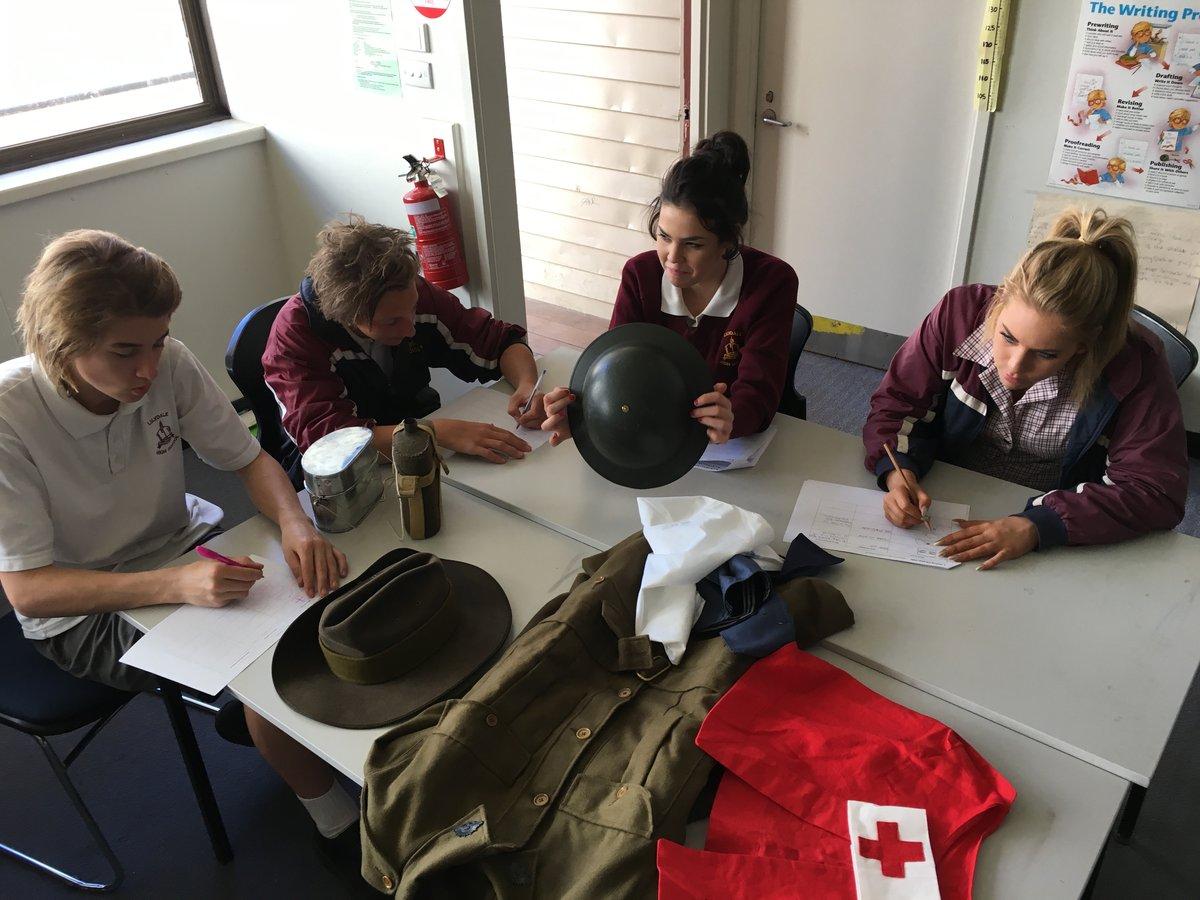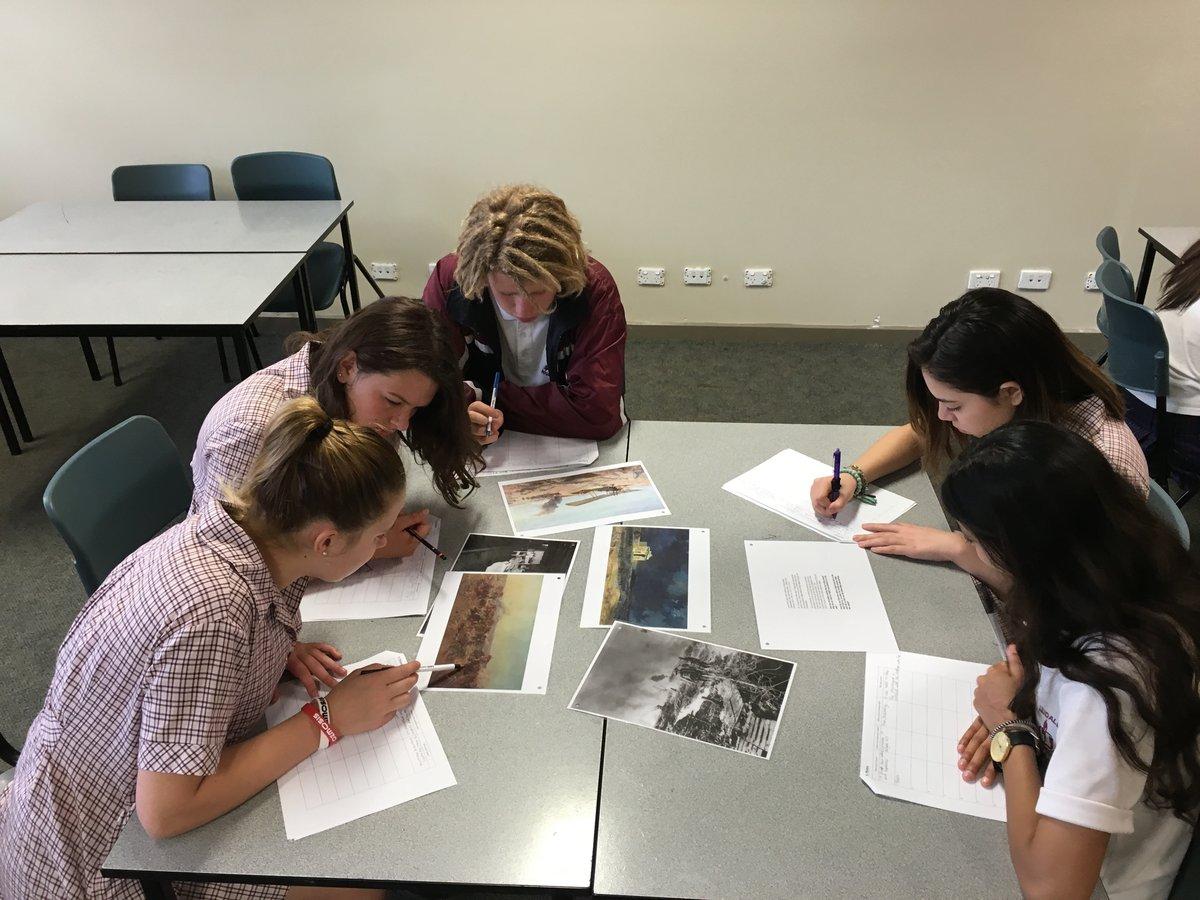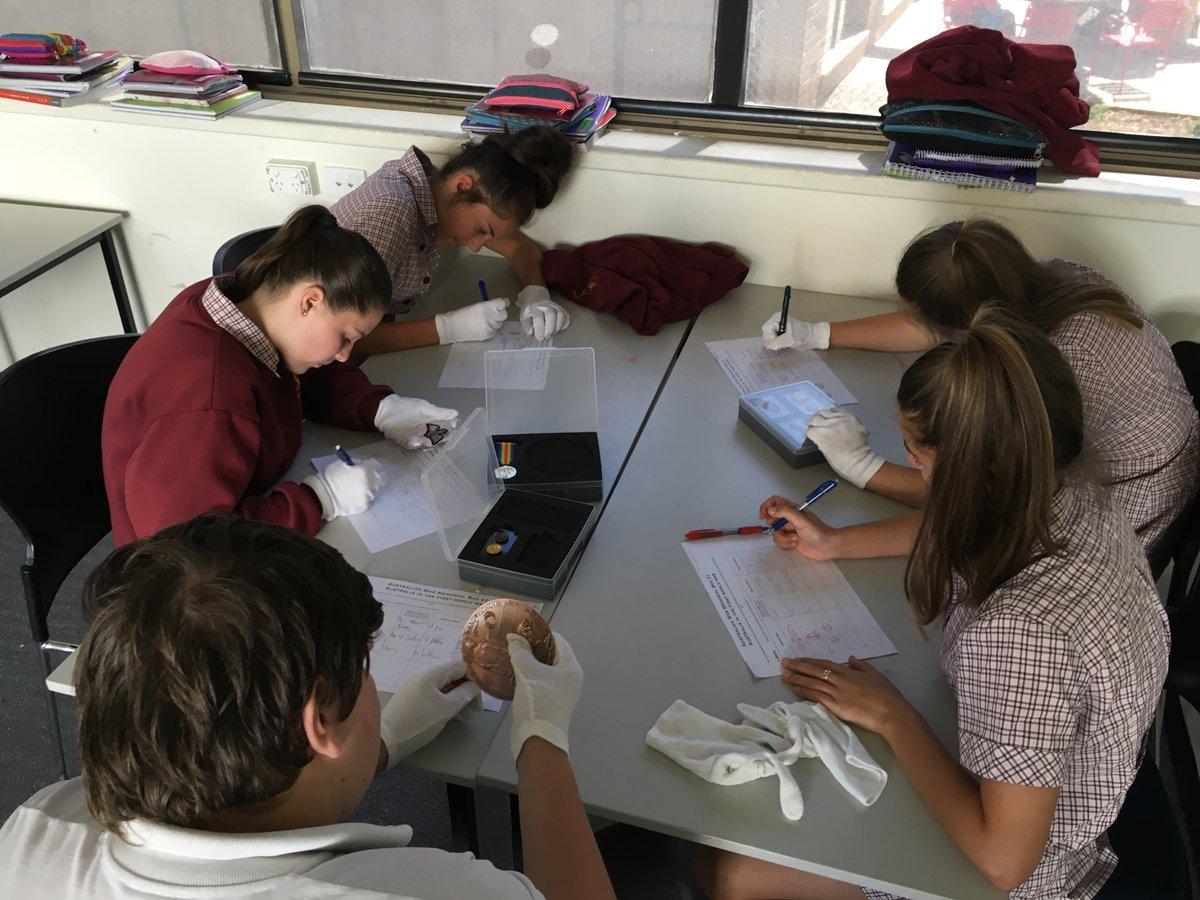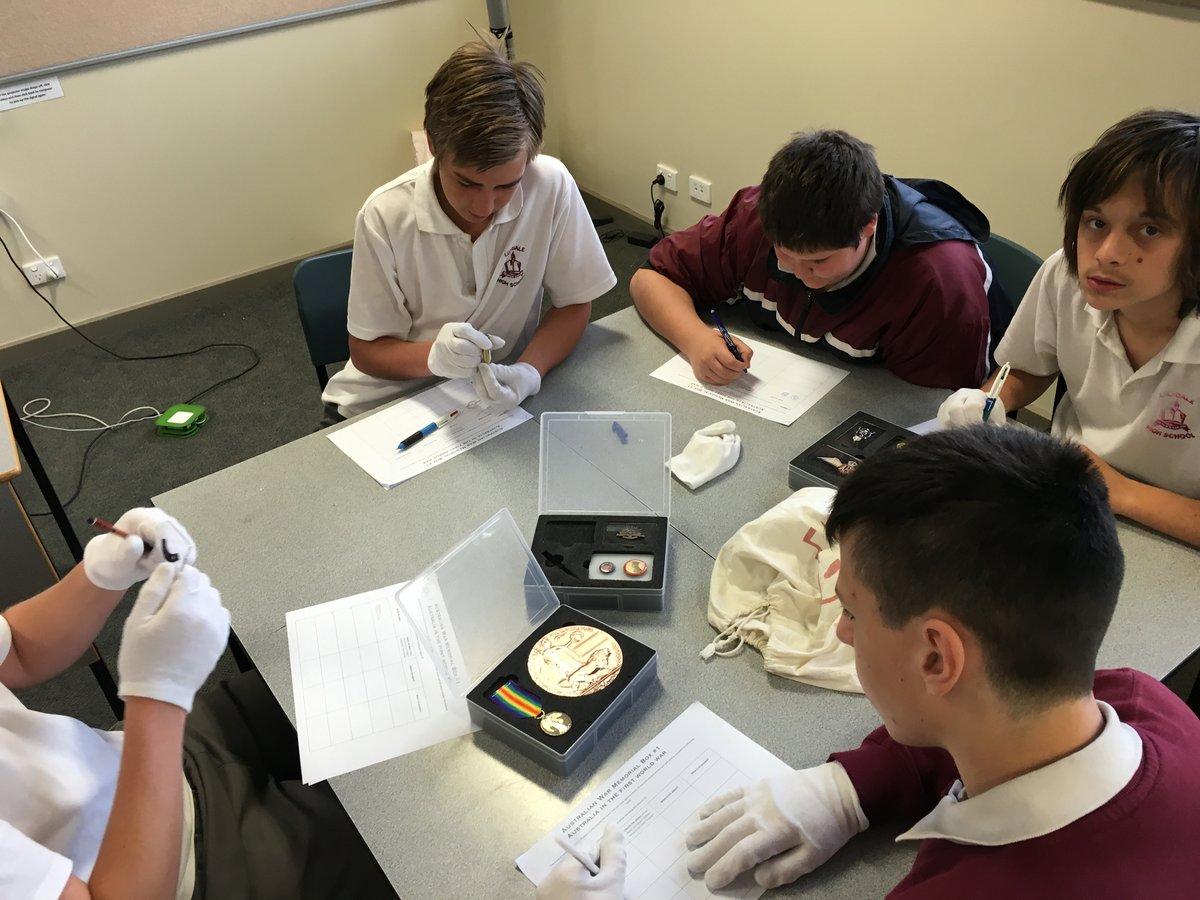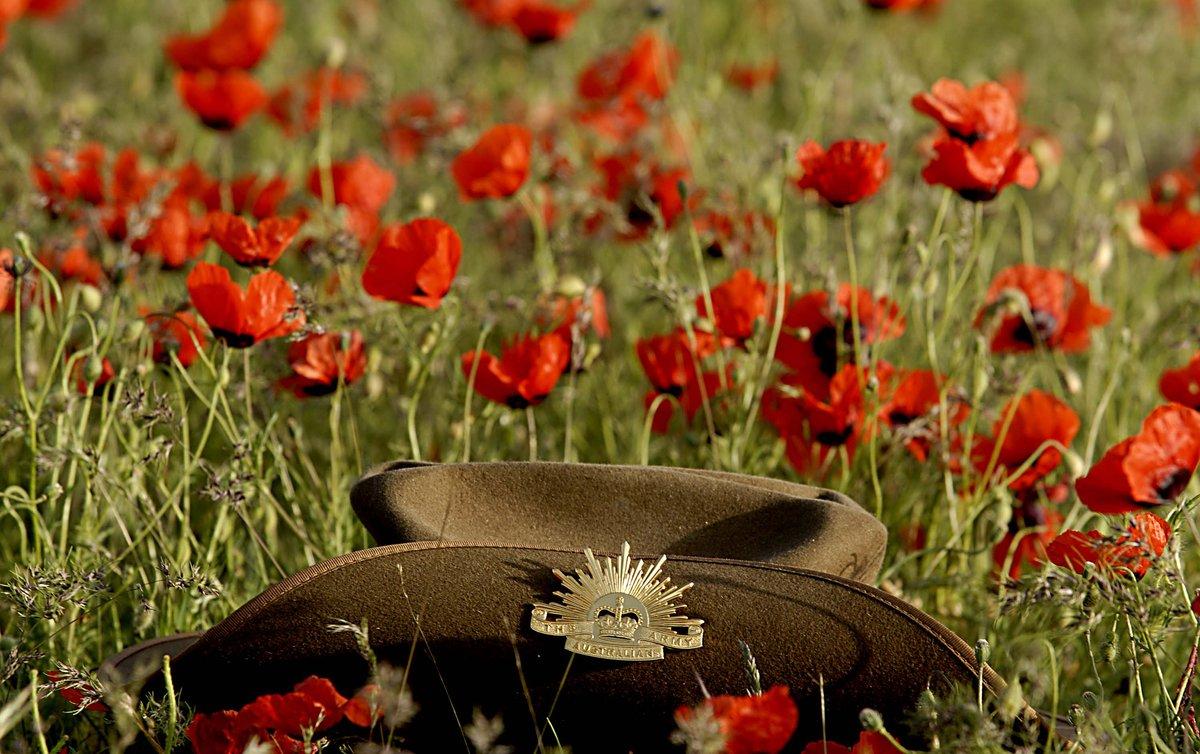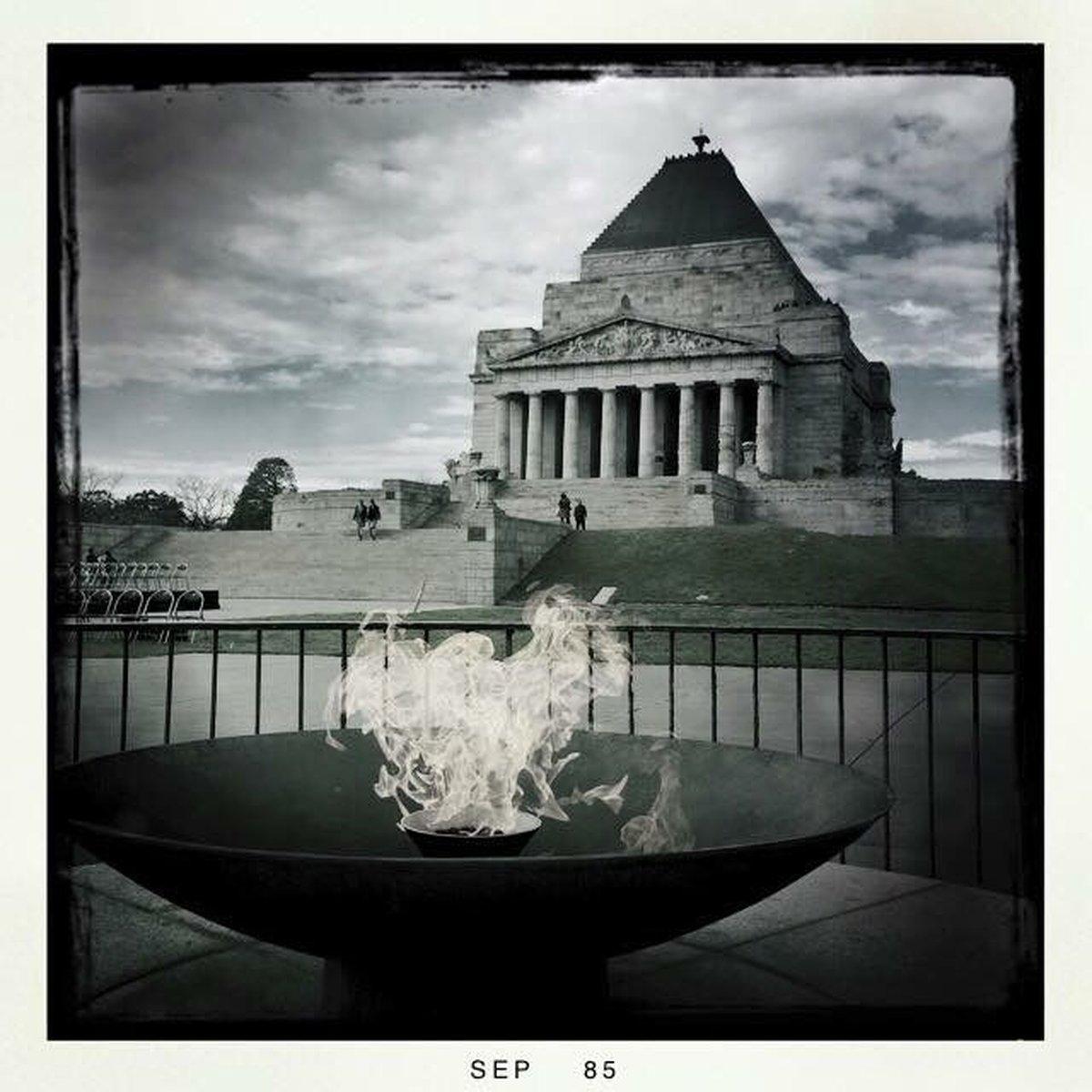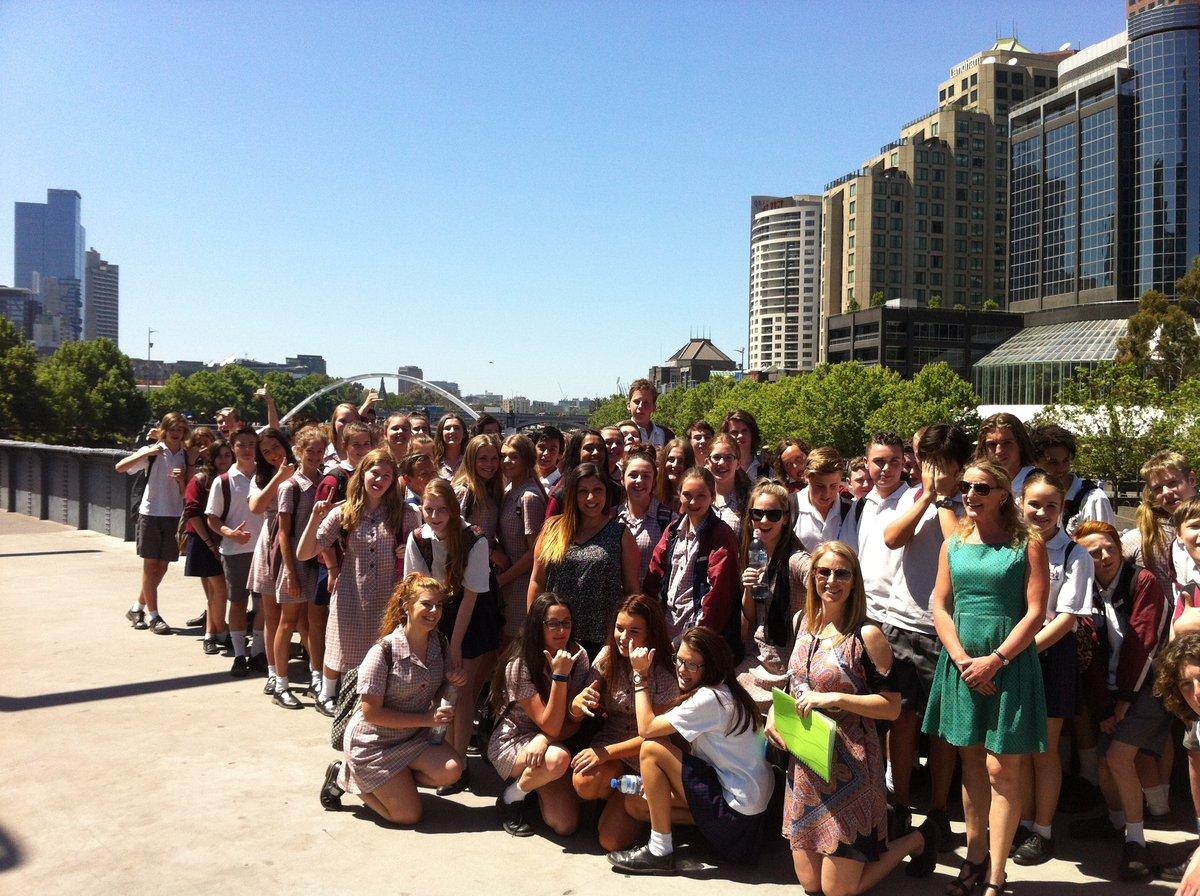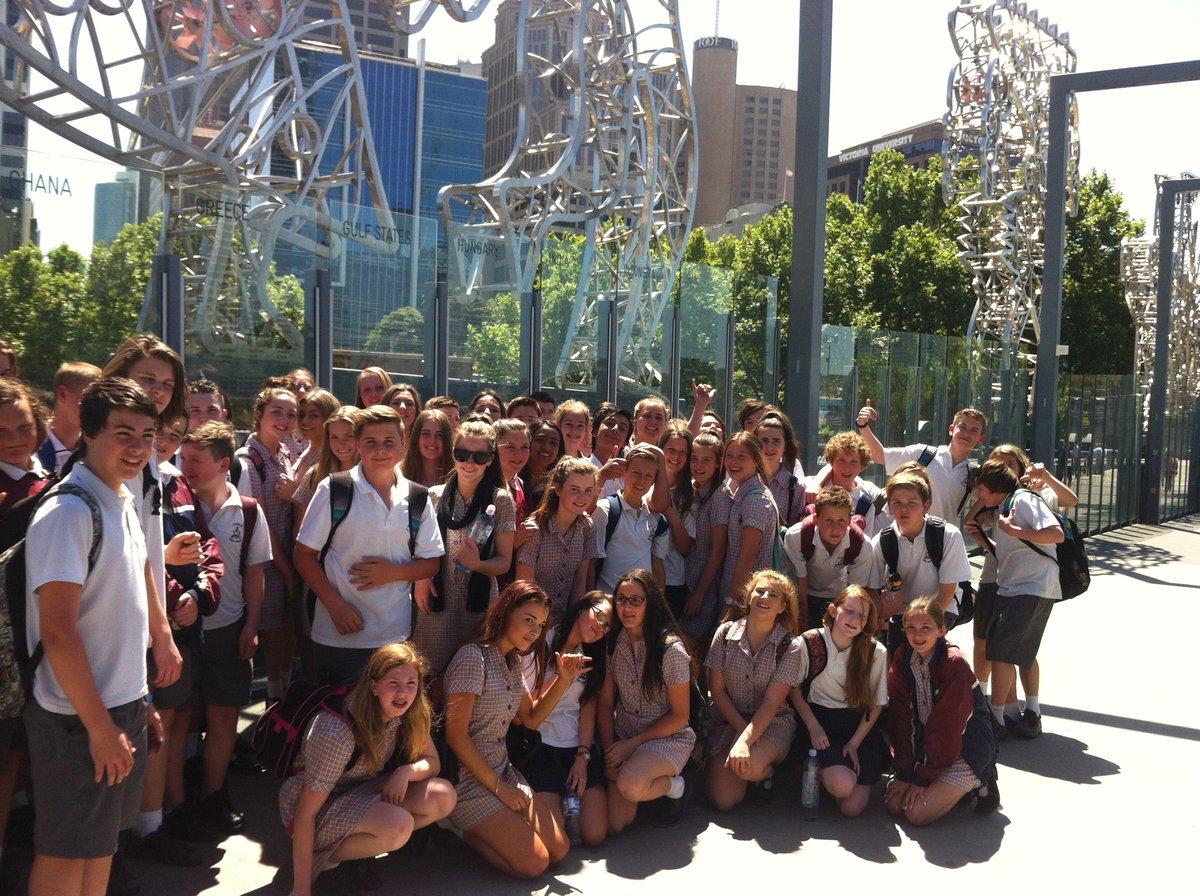HUMANITIES
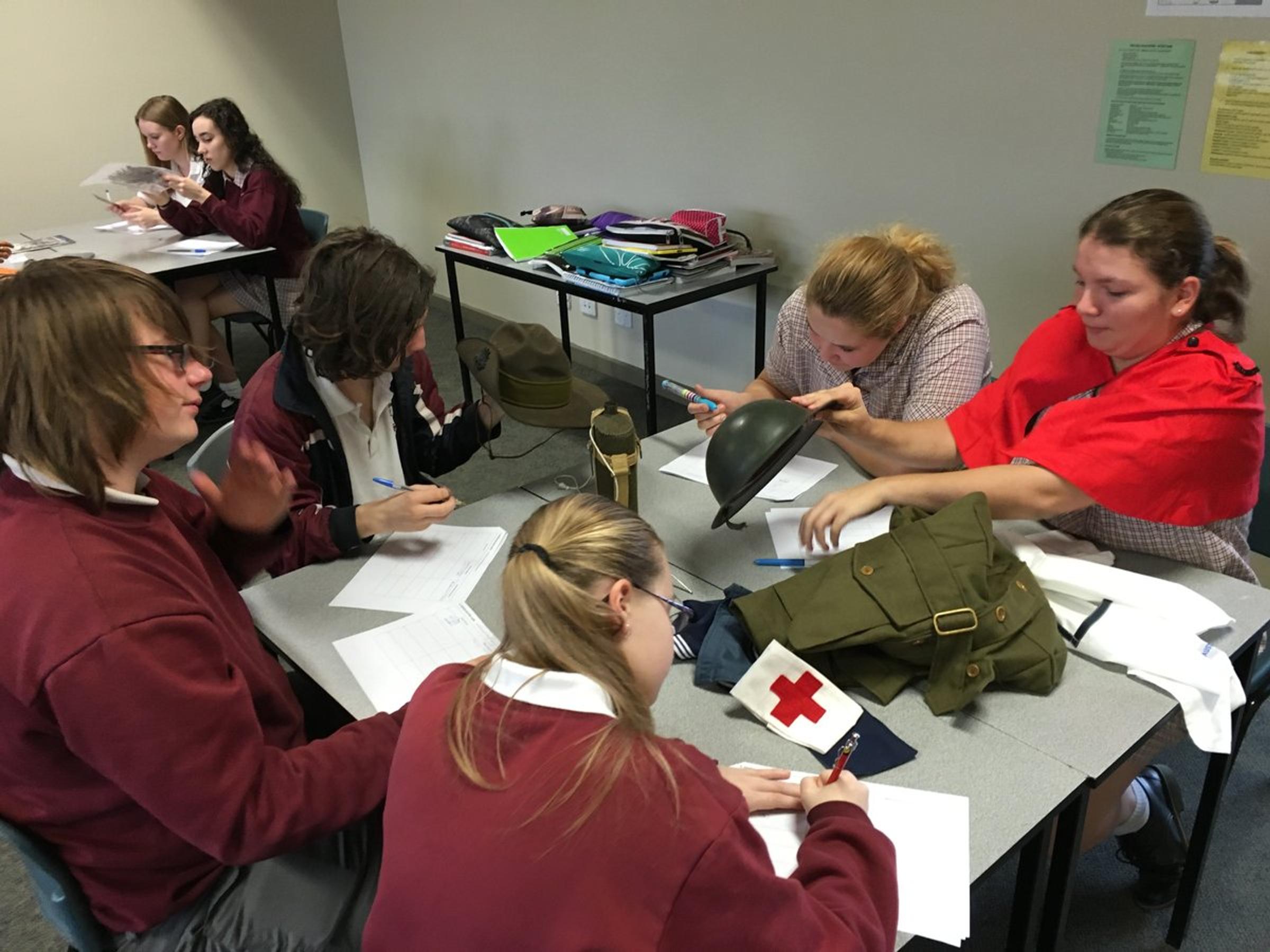
WW 1 COMES ALIVE
Year 9 History students have been utilising artefacts from the Australian War Memorial to deepen their understanding of World War 1.
Students had the opportunity to try on replica clothing, hypothesise the uses of different relic, analyse documents and suggest reasons why certain pieces of art exist.
The box of artefacts is kindly supplied by the AWM at a small cost and provides students with a fantastic opportunity to develop their enquiry learning skills.
POPPIES & REMEMBRANCE DAY EXCURSION
Poppies
At 11 am on November 11, 1918 the armistice ending World War 1 saw the cessation of hostilities in Europe. On the scarred battlefields, poppies were the first signs of plant life to appear and have been used as a symbol of remembrance since then.
I will be selling poppies on behalf of the Returned and Services League (RSL) with all proceeds going to the 'Health and Wellbeing' of veterans and their families.
On sale are $2 and $5 poppies, $3 wristbands and $4 luggage tags. Please try to provide correct change. Students can purchase them from Form Representatives or from Staffroom 2 (behind the Library).
Remembrance Day Excursion
Students from all year levels are invited to attend the Remembrance Day Ceremony at the Shrine of Remembrance on Wednesday 11 November. To register your interest in attending, please see Ms Mays in Staffroom 2.
Kristy Mays
VCE Humanities Teacher
IMMIGRATION MUSEUM & SANDRIDGE BRIDGE EXCURSION
On Monday 19 and Wednesday 21 October, eight of our Year 8 Geography classes travelled to the city to study immigration.
The students visited the Immigration Museum and Sandridge Bridge where they were able to experience anecdotes and examine artefacts from 180 years of immigration to Melbourne.
Many students were awestruck at the monumental decisions people had to make in order to leave their families and homelands to make, the often perilous, trip to the 'Great Land in the South'.
Within the Immigration Museum our students were able to read diaries, analyse ship routes and evaluate life on board an immigrant ship. The differing levels of comfort within a ship's accommodation had many students commenting they wouldn't want to be an 'assisted migrant' on one of the old sailing ships that took many months to sail to Melbourne. Of course, that's exactly how many migrants made their way to our shores.
On Sandridge Bridge, the students collected data to use for their projects, including interviewing 'citizens' that had migrated to Melbourne.
On one day the weather was glorious, on the other it was cold and overcast but either day the students were eager and engaged in their research and Melbourne seemed the greatest place to be.
Steven Hodder
Head of Humanities
